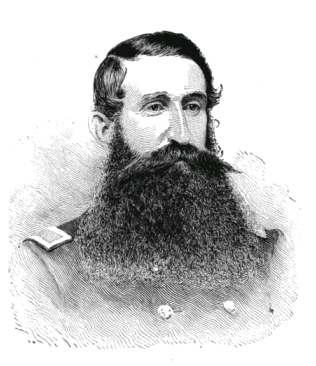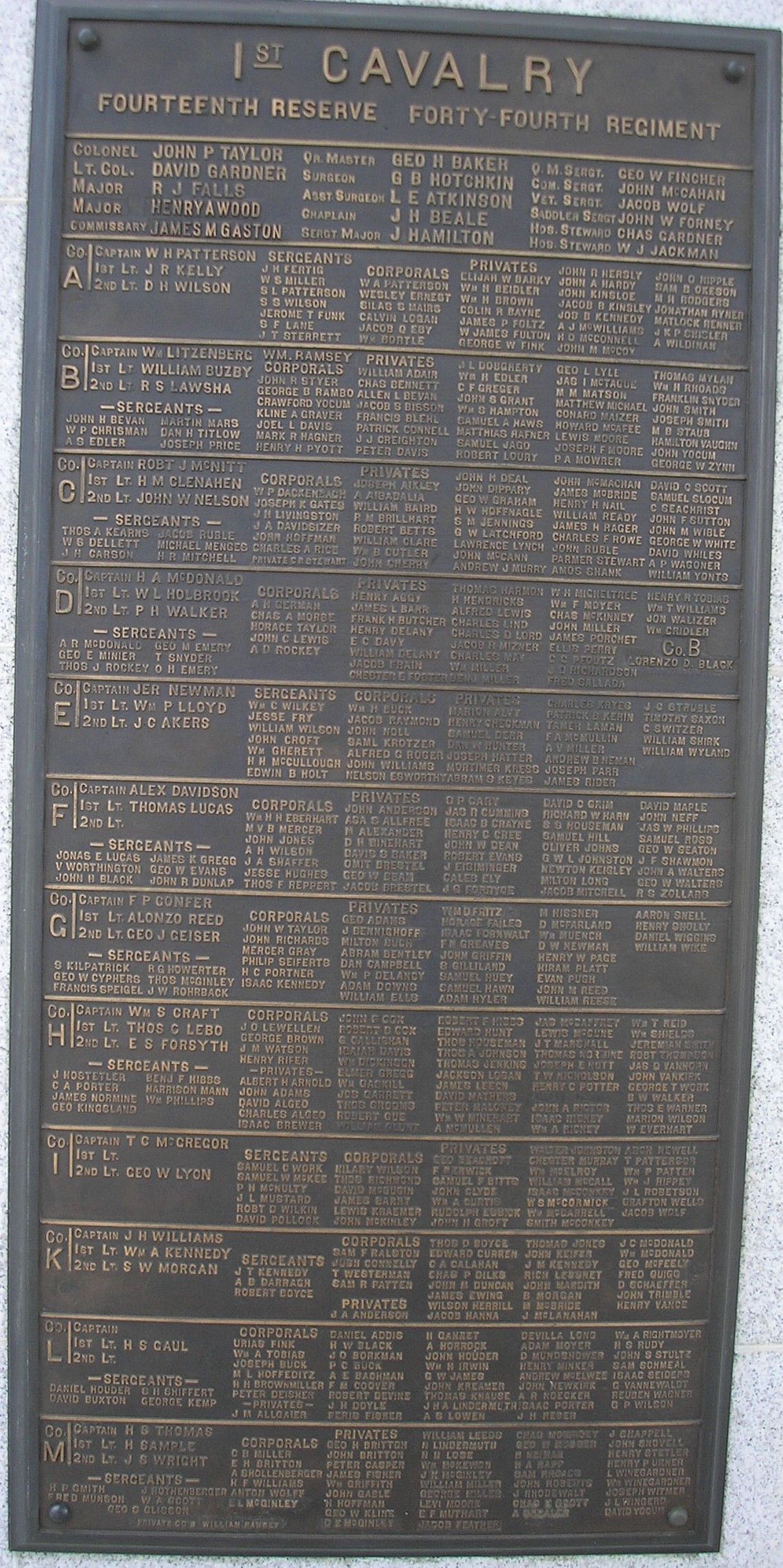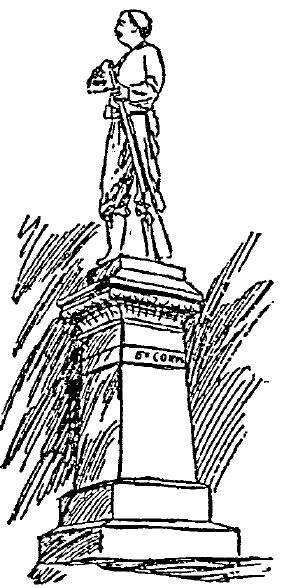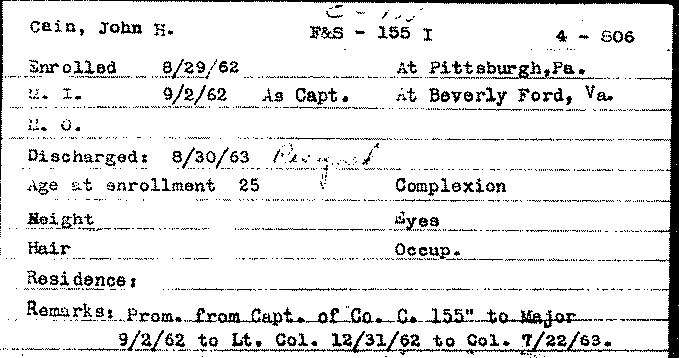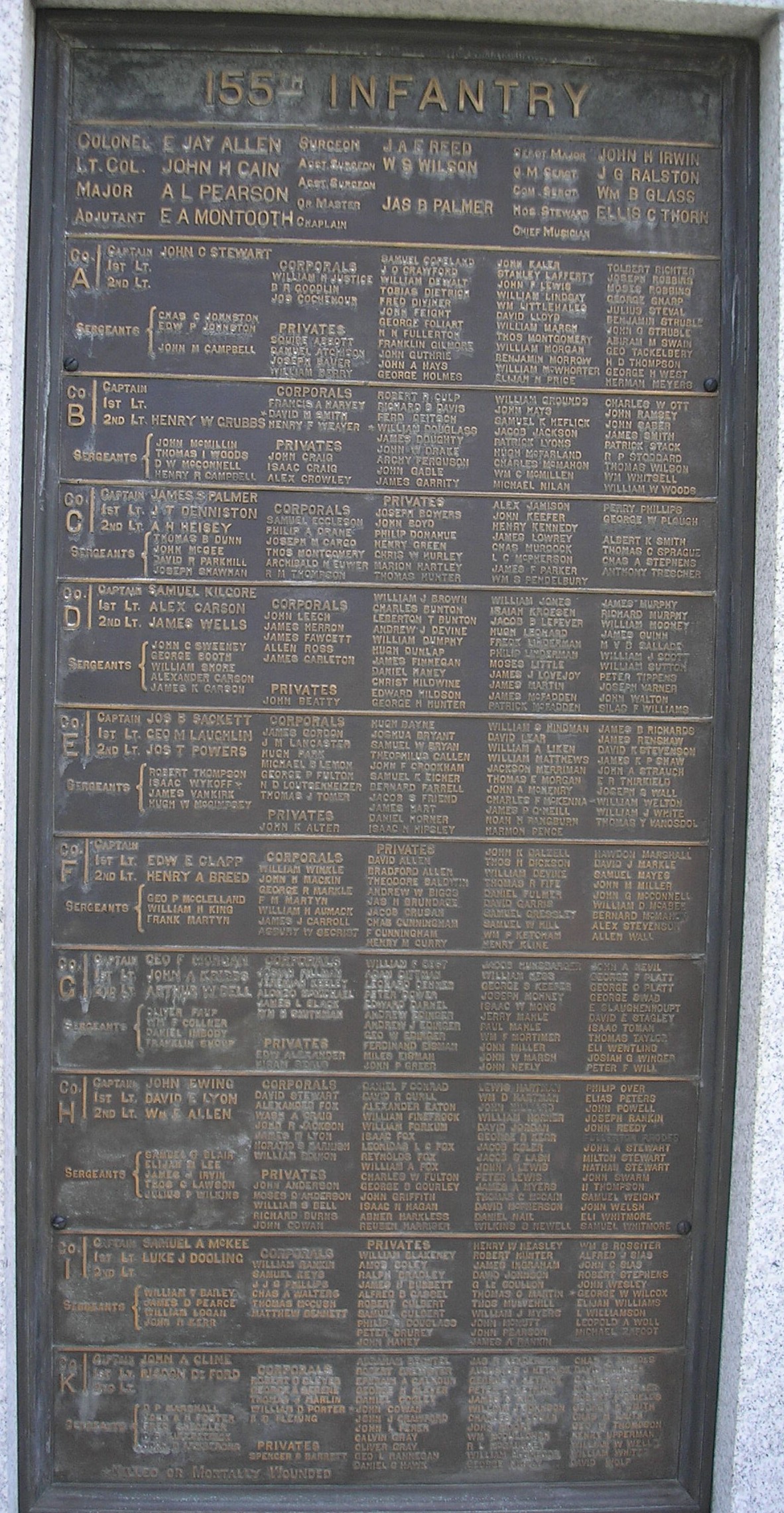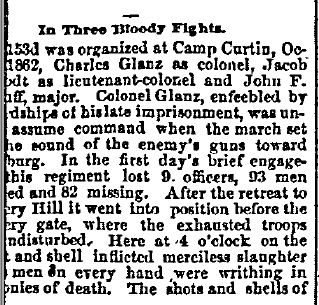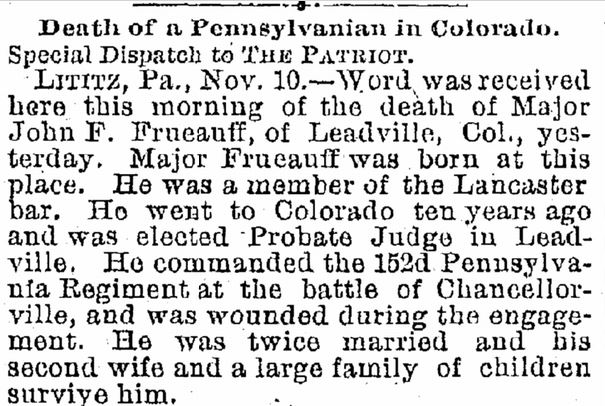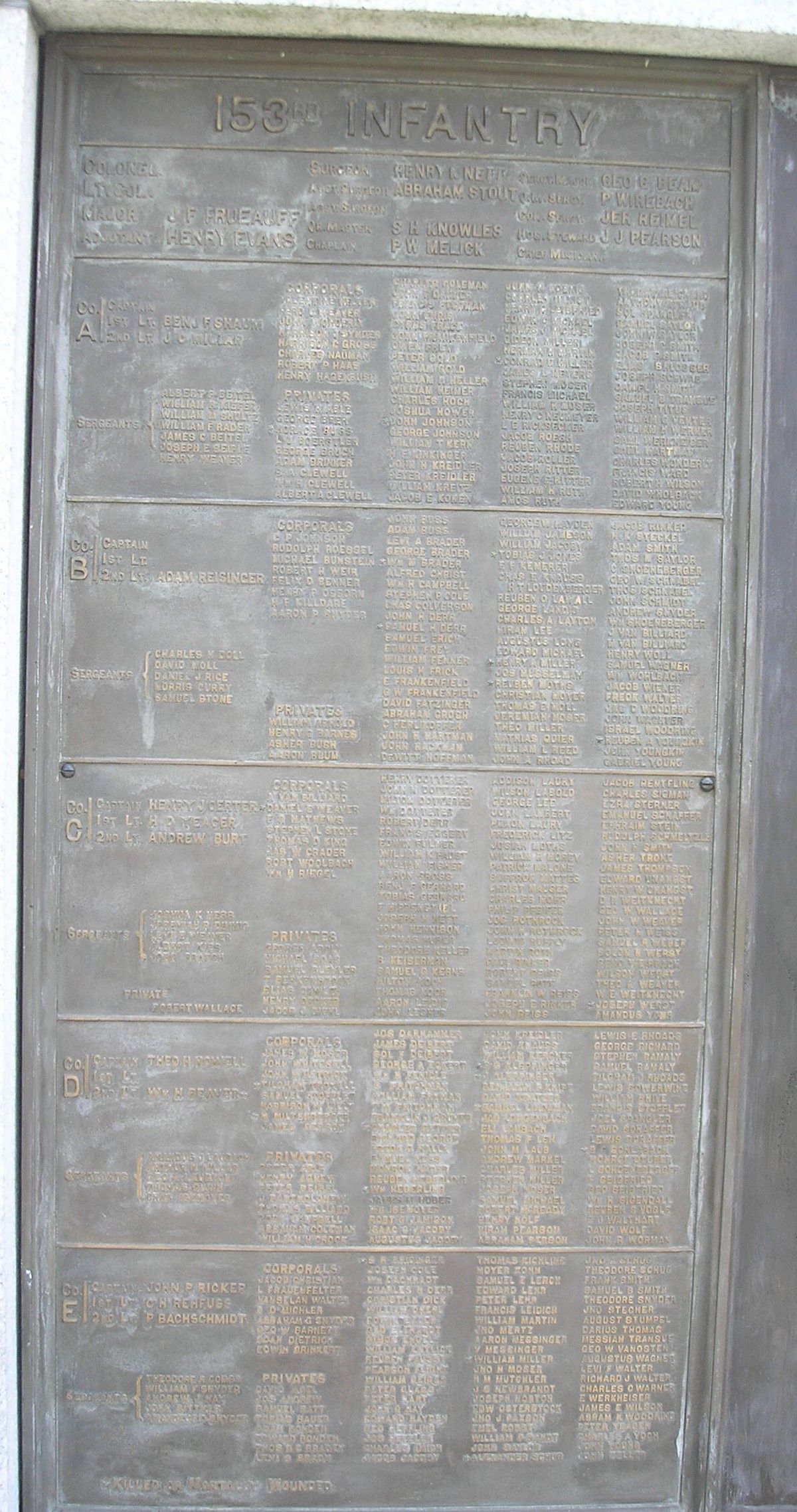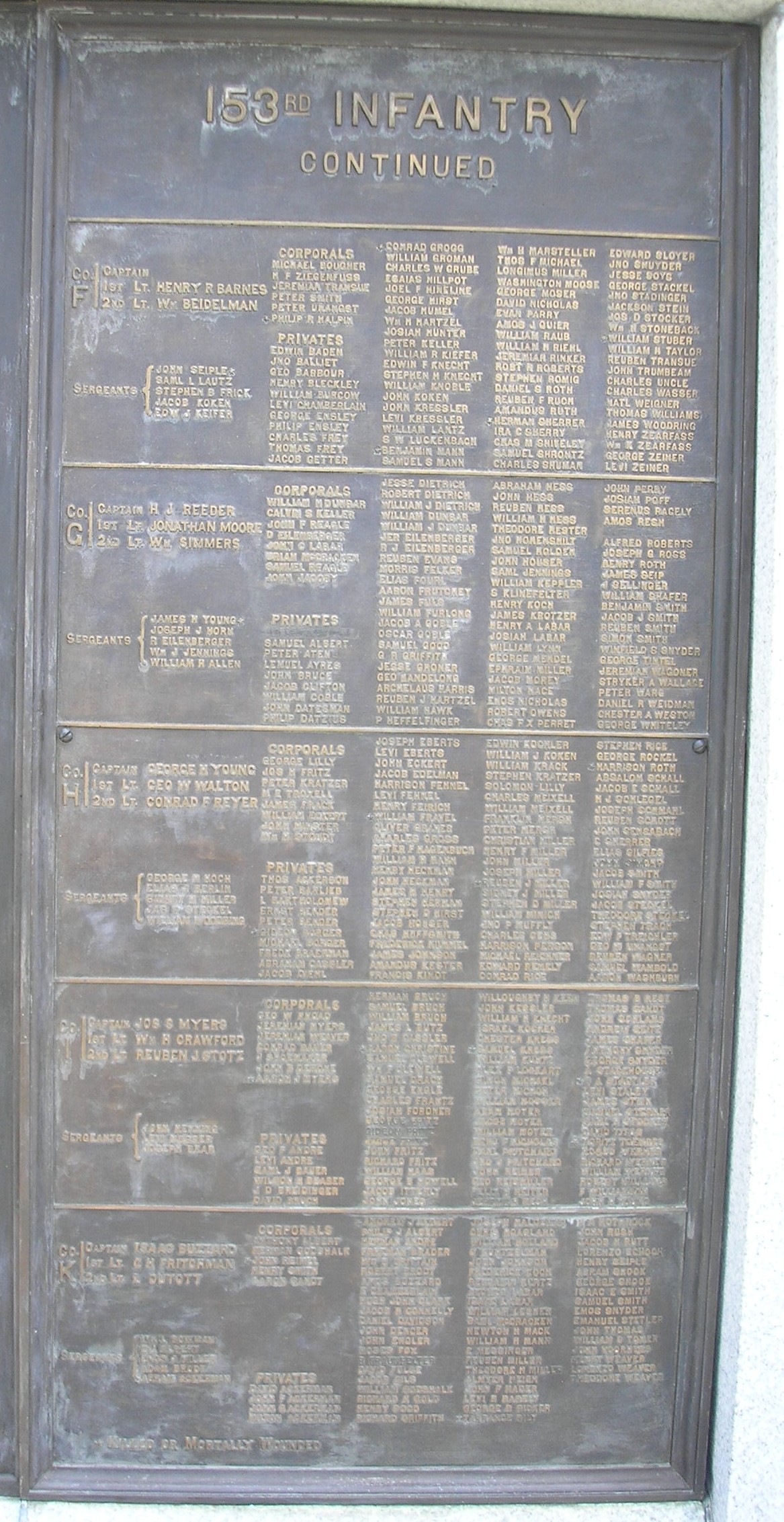The Pension Fraud Case of Andrew M. Betz
Posted By Norman Gasbarro on May 1, 2015
A few years ago, a message was received from an Ancestry.com subscriber, A. Sinton, regarding an Anthony Betz, who was born in 1836:
I have been trying to determine if the Anthony Betz, born 1836, in my tree is the Civil War soldier who enlisted in the 177th [177th Pennsylvania Infantry]. I see you have the same records attached to your Anthony Betz (1822-1902). I have a copy of the pension file and cannot properly ID Anthony Betz. It seems that there was identity theft even in those days and someone tried to impersonate an Anthony Betz. But the file does not ID the true one, other than to mention that the imposter may have been Anthony’s uncle, Andrew. If your individual is the true Anthony Betz, then mine is not. Have you been able to prove this beyond the records here on Ancestry? Does any of this sound familiar? Thanks for any help that you can give.
The initial response to that inquiry was as follows:
Information is much confused on the identity of this person…. The pension file… includes the conviction for fraud.
In the Civil War Research Project files, there is a copy of a paragraph written by Ned Weaver which was part of a talk he gave on the 177th Pennsylvania Infantry about 20 years ago:
Some of the pension records are fictitious. Andrew Betz, for a brief period after the war, ran a hotel here [Gratz]. He filed for a pension claiming piles and rheumatism, acquired at Suffolk, Virginia, under the name of Anthony Betz. [He] swore to the same at a few Justices of the Peace, but got nailed by Henry Keiser [a long-time First Sergeant]. Keiser evidently did pass through the 177th [sic]. Betz, an imposter, finally had to admit guilt, and the Department of the Interior took him to court, where he got a $3000 fine, and was sent to jail in St. Louis. Two of his kids changed their name to Bates….
With these questions and statements, it is appropriate to return to the documents and see if the truth can be determined.
A document dated 23 March 1897 notes the following:
Hon. Commissioner of Pensions
Washington, D.C.
Sir:
Replying to your favor of the 19th inst. relative to the papers in the claims of Andrew M. Betz alias Anthony Betz, I beg to say that, on March 2nd 1897 Betz was indicted under Sections 5392, 5434, and 5438 R.S.U.S. That on March 4th, he was arraigned and entered a plea of not guilty; that thereafter the pleas of not guilty was withdrawn and on March 5th 1897 he entered a plea of guilty to one indictment, and in the other two indictments against him a nolle prosequi was entered.
On March 5th 1897 the sentence of the court was imposed by a fine of $3000 and committed to St. Louis County [Minnesota] jail until fine should be paid.
I beg herewith to return all of the records and files handed me by Special Examiner Waite.
Very Respectfully
Edward C. Stringer
United States Attorney
District of Minnesota
Additional documents in the pension file report of the investigation include the following:
(1) A letter of 6 May 1896 from the Commissioner of Pensions at the U.S. Department of the Interior to the Chief of the Record and Pension Office of the War Department:
Sir:
For use in connection with the contesting claims of Andrew M. Betz, alias Anthony Betz, an imposter, who claims to have served in Company I, 177th Pennsylvania Drafted Militia, No. 1,105,807, and of Anthony Betz, the soldier who performed the service, Certificate Number 343762, you are requested to furnish a report showing whether more than one Anthony Betz served in said company during the period from 30 October 1862 to 5 August 1863, and, if so, giving the full military and medical history and personal description of both men.
Please return this letter with your reply.
(2) A letter of 28 May 1896 from the Acting Commissioner of Pensions to the U.S. Secretary of the Interior.
Sir,
I have the honor, herewith, to transmit the papers in the pension claim of Andrew M. Betz, an imposter, who claims to have served in Company I, 177th Pennsylvania Drafted Militia, No. 1,105,807, and of Anthony Betz, the soldier who performed the service, Certificate No. 343,762, with recommendation that the same be forwarded to the Honorable, the Attorney-General, with the request that the same be forwarded to the Honorable, the Attorney-General, with the request that the United States Attorney for the District of Minnesota, be instructed to institute criminal proceedings against Andrew M. Betz, alias Anthony Betz, the claimant above mentioned for violation of Secs. 5392, 5435 and 5438, revised Statutes of the United States.
The evidence upon which this recommendation is predicated is as follows:
On 19 April 1892, claimant filed a declaration for invalid pension under the Act of 27 June 1890, alleging service in Company K, 9th Pennsylvania Reserve Volunteers [38th Pennsylvania Infantry] On 22 March 1895, filed an affidavit alleging that the service as given in the declaration was an error, and that he in fact served in Company I, 177th Pennsylvania Volunteer Infantry, and not in Company K, 9th Pennsylvania Reserve Volunteer Infantry as alleged in the declaration; that he was drafted 13 October 1862, and discharged 5 August 1863. (See B.J., p. 2). Declaration and affidavit are signed “Anthoney Betz,” which seems to be as near as he could come to the correct spelling of the name of the soldier Anthony Betz, whom he was endeavoring to personate.
Betz testified before Special Examiner Waite, on 10 March 1896, that said affidavit was signed by him; that he heard it read before signing, and that he perjured himself when he executed the same. In this connection he testifies before the Special Examiner: “This affidavit is not true in the particulars where it recites my service in Company I, 177th Pennsylvania Volunteers, and I knew at the time it was not true.”
George M. Frey, whose address is 28 1st Avenue, S., Minneapolis, Minnesota, and Edward Bates (son of claimant), whose address is 75 Spruce Place, Minneapolis, Minnesota, both give positive testimony to the effect that the claimant’s name is Andrew and not Anthony, as alleged by him in his original declaration.
It would, therefore, appear that the said Andrew M. Betz has been guilty of filing a false, fraudulent and fictitious claim; that he knew such claim to be false, fraudulent and fictitious, and that it was clearly his intention to successfully prosecute the same, if possible.
From the paper in the case it does not appear that the attorney, R. B. Hostetter, has knowingly or willfully [sic] been connected with this attempt to defraud the Government, but that he was imposed upon by the claimant, and acted in good faith.
In summoning the witnesses for the Government the names of John A. Betz, and Annetta Betz, the attesting witnesses to claimants deposition before Mr. Waite, should not be overlooked.
Very respectfully.
Acting Commissioner.
Information that can now be determined about this case, specifically by referencing the pension application files, and other available documents.:
1. There was an Anthony Betz who served as a Private in the 177th Pennsylvania Infantry, Company I. There was no other person by that same name or with the surname Betz who served in that regiment. According to the Registers of Pennsylvania Volunteers available from the Pennsylvania Archives, Anthony Betz was 40 years old at the time of his enrollment (born approximately 1822). He applied for a pension on 29 December 1879 and received a pension based on his service in the 177th Pennsylvania Infantry. No widow applied. He died on 1 March 1902, and is buried in St. John’s (Hill) Church Cemetery, Berrysburg, Mifflin Township, Dauphin County. His wife, Catherine [Rowe] Betz, died on 7 August 1883, and is buried in the same plot at St. John’s Church Cemetery. The Pension Index Card from Fold3 is shown below:
At the bottom of the card for Anthony Betz, there is a note that he is not identical with the Anthony Betz whose application was numbered 1105807.
2. There was another individual named Betz who claimed he served in the 177th Pennsylvania Infantry. This was actually Andrew M. Betz whose application first indicated he served in the 9th Pennsylvania Reserves, but then he corrected the application to indicate that he served in the 177th Pennsylvania Infantry. Andrew knowingly falsified his application in order to defraud the Government.
According to the Pension Index Card from Ancestry.com, he first applied on 16 April 1892 from Minnesota. After investigation, the Government disallowed his claim and he was indicted, convicted and fined $3000, for which he was sent to jail in St. Louis County, Minnesota, until he could pay the fine.
The Pension Index Card from Ancestry.com is shown below . At the bottom of the card there is a note that he is not identical with the Anthony Betz whose application was numbered 343762 – the real Anthony Betz who actually served and received a pension.
Not much more is known about the convicted Andrew M. Betz. When and where was he born? Where did he die and where is he buried? Was Andrew related to Anthony? These are questions for further research.
According to information in the Gratz history, the real Anthony Betz and his wife Catherine were the operators of a hotel and tavern, “The Rising Sun,” in Gratz for a short period from 1874 to 1876 (A Comprehensive History of the Town of Gratz, p. 265 and p. 766). Ned Weaver, who presented the program in Gratz [reported near top of this post], got Andrew and Anthony confused. It was Anthony who operated the hotel – not Andrew. And, when the real Anthony applied for a pension based on “piles and rheumatism,” he received it – because he really had served honorably in the 177th Pennsylvania Infantry.
3. The information presented by A. Sinton at the top of this post is for an Anton-Anthony Betz, who was born in Germany on 17 May 1836 and died in Tamaqua, Schuylkill County, Pennsylvania, 13 January 1882. This Anthony Betz did not serve in the 177th Pennsylvania Infantry. After arriving in the United States before the Civil War, he lived in Tamaqua the rest of his life and is buried there at the Zion Evangelical Lutheran Church Cemetery. No record has been seen connecting him to Civil War service.
4. Finally, two documents have been located from 1900 which may give an answer as to what happened to Andrew M. Betz after he was convicted of pension fraud. The first document, portions of which are shown below, is the Federal Census of 1900 from Duluth, St. Louis County, Minnesota. The page is from the enumeration taken at St. Luke’s hospital in that city and shows an Andrew M. Betz, one of many patients at that institution, born about December 1837 in Pennsylvania of a father also born in Pennsylvania and mother born in Germany. By occupation he was a stove repairer. He was married and had been so for 42 years.
The second reference is a Findagrave Memorial for an Andrew Betz, who died on 16 June 1900 at Duluth, St. Louis County, Minnesota. No birth information is given, but the data included in the Findagrave Memorial references “SLCDR” (presumably St. Louis County Death Records), page 016 – and the age of the decedent, 62 years, matches the age given in the 1900 census. Andrew Betz is buried in the Poor Farm Cemetery, Duluth, St. Louis County, Minnesota.
—————————-
Census returns are from Ancestry.com.
 ;
;
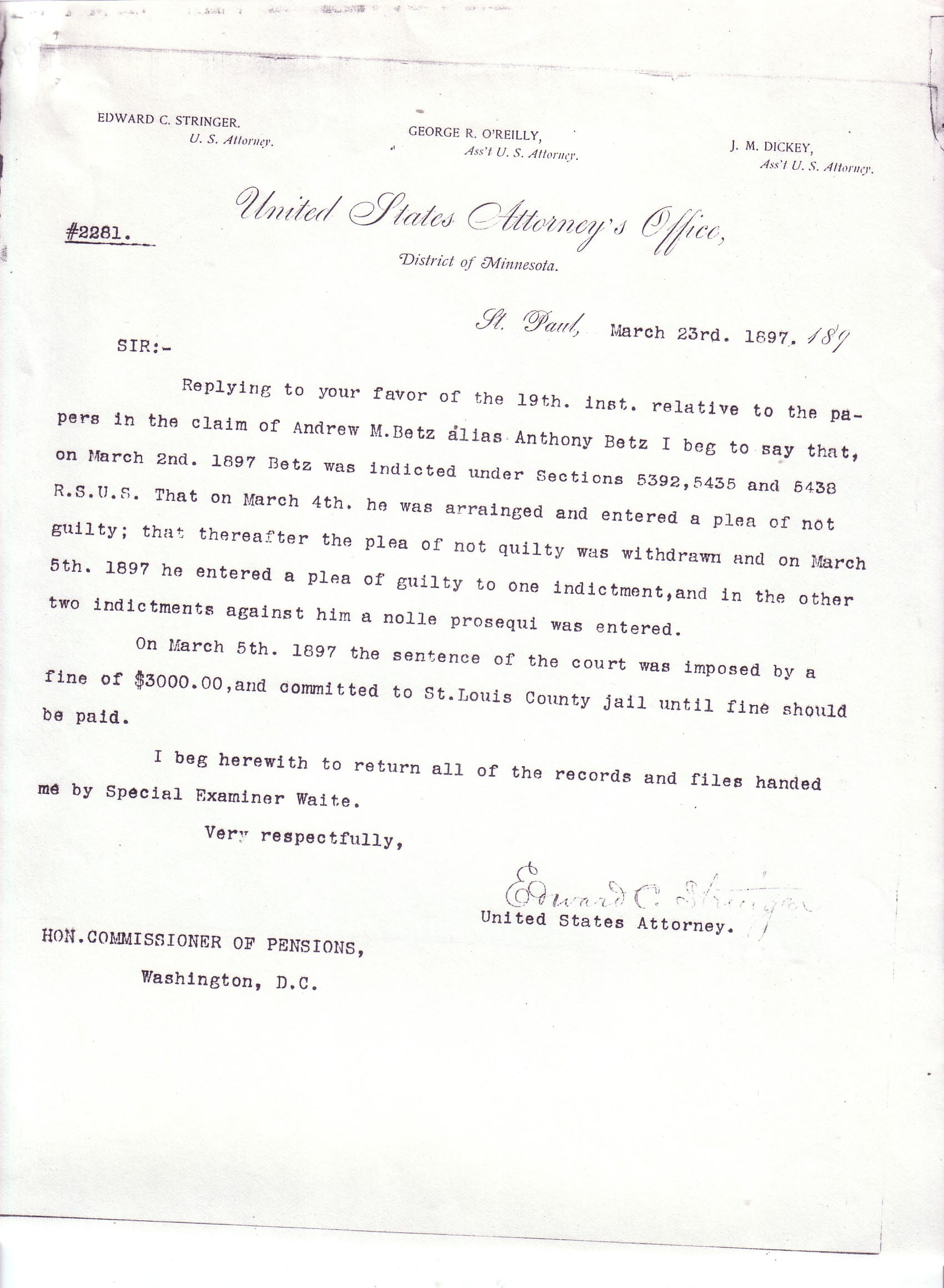
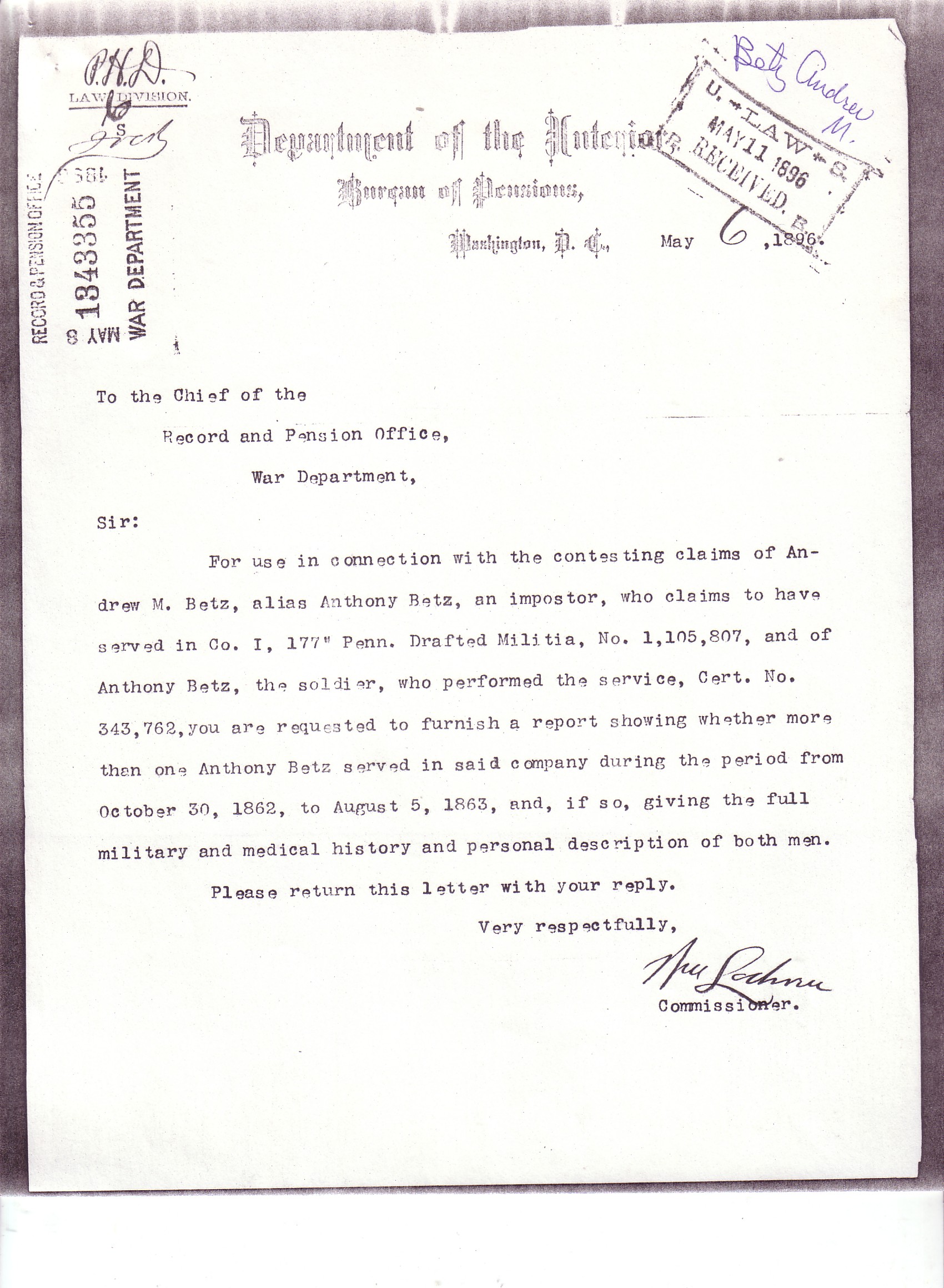




 ven the building itself. After it was sold back to Crosby by the lottery winner, the hall saw more consistent performances. The hall hosted the 1868 Republican National Convention. It was destroyed in the Great Chicago Fire of 1871 and never rebuilt.
ven the building itself. After it was sold back to Crosby by the lottery winner, the hall saw more consistent performances. The hall hosted the 1868 Republican National Convention. It was destroyed in the Great Chicago Fire of 1871 and never rebuilt.


